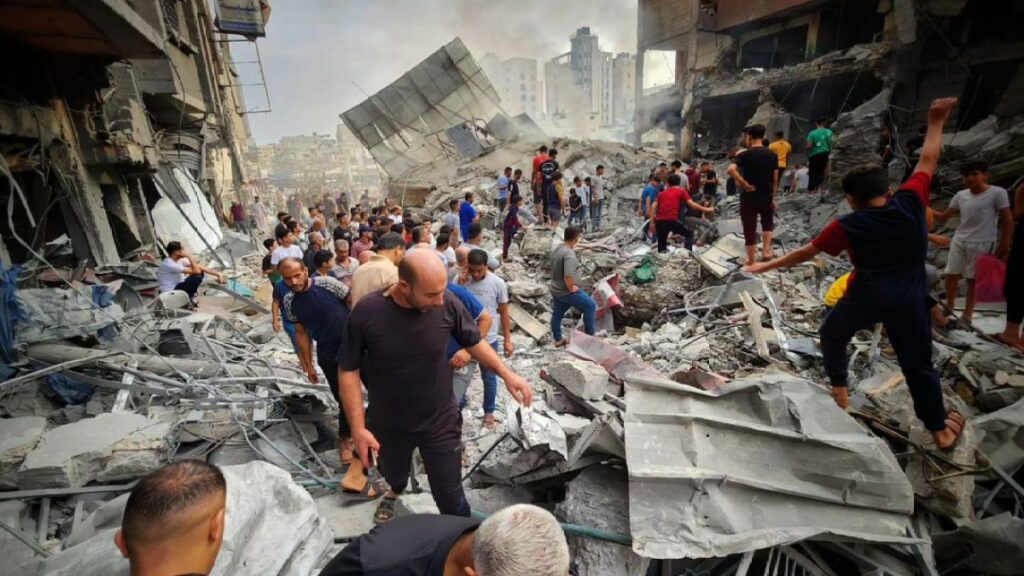9/12/2023–|Last updated: 12/9/202304:00 PM (Mecca time)
The British newspaper The Times published a report on the tragic conditions of thousands of displaced people in Gaza, saying that diseases are spreading among them, and they are forced to sleep in the open air waiting for the end of the war.
The newspaper reported that residents of the northern Gaza Strip were displaced to Khan Yunis in the south while Israel continued its comprehensive attack, and from the south they began to flee to the border and the sea, and now more than two million people are being crushed and crammed into two small areas, and they are asking where they can flee after that?
The report claimed that Israel has been urging civilians throughout its campaign in Gaza to leave the places it is about to attack and occupy by its army.
Nowhere to Flee?
“The Times” quoted one of the displaced Palestinians, named Ibrahim Abdel Karim (38 years old), as saying that they were displaced from the north to Nuseirat, and from there to Deir al-Balah, and from there to Khan Yunis, and then to Rafah. He asked, “What do we do after that? Where do we flee with… Our families?
The newspaper said that Rafah is the last city before reaching Egypt, and before the war it was home to less than 200,000 people, adding that there are now nearly a million people estimated to be crammed into half of the city.
“People are piled on top of each other,” Abdul Karim said. People are camping in streets, parking lots, schools and hospitals that have become informal displacement camps, and are already full, the report said.
The Times did not indicate that these places remained targets of Israeli raids that killed hundreds of displaced people.
Diarrhea, infections and lice
The report indicated that the United Nations, the main source of humanitarian aid, said that 1.2 million people across Gaza had sought refuge in its schools, hospitals and other areas, and that diseases were spreading among them, in addition to more “daily” cases such as diarrhea, skin infections and lice.
The director of the Kuwaiti Hospital in Rafah, Dr. Jamal Al-Homs, was quoted as saying that the rain makes matters worse, “and this has led to a deterioration in health and the spread of infectious diseases and digestive system problems, and there are many large hospitals that are no longer in service.”
The Times claimed that although it is not a major target, Rafah has been bombed at least twice in the past two days, adding that this is a harbinger of what is to come, as Israel attempts to control the rest of Gaza.
“safe” area
The newspaper added that what was called a “safe zone” was established near the beach in Al-Mawasi, west of Khan Yunis, but there are few facilities, and the United Nations says that it is difficult to transport a small amount of aid from Egypt through Rafah, due to the aerial bombardment and fighting on the ground. .
She pointed out that the United Nations Humanitarian Coordinator, Martin Griffiths, announced that they no longer have a humanitarian operation in southern Gaza that can be called by this name anymore in light of the current circumstances.
The report also claimed that the Israeli army, under pressure from the US government to pay more attention to the suffering of civilians during the military attack, is allowing aid to pass through Israel, and that the occupation army announced on Thursday that it intends to reopen the Kerem Shalom crossing, which was destroyed during Operation Flood. Al-Aqsa was launched by the Islamic Resistance Movement (Hamas) on October 7th.

